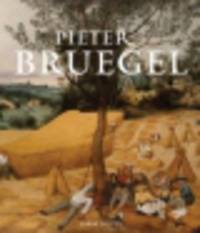Поиск книг, учебников, пособий в онлайн-магазинах

Pieter Bruegel
Автор: Larry Silver, 424 стр., издатель: "Abbeville Press", ISBN: 978-0-7892-1104-0This fascinating full-length study examines all works by the great Flemish painter Pieter Bruegel within the wider setting of art during his lifetime. "Art historian Silver follows his magnificent Hieronymus Bosch (2006) with an equally capacious and gorgeously produced volume devoted to Bruegel... he astutely explores Bruegel's phenomenal gift for surreal, demonic, yet droll allegories; his encylopedic renderings of everyday Netherlandish peasant life; and his unconventional religious paintings.” -- Booklist "This oversized book is beautiful in its own right, with glowing warm tones and rich shadow details throughout. ...[Silver] writes clearly and directly, admiring without fawning, and is respectful of previous Bruegel scholars even as he revises and reinterprets their work. His text is striking for the exactness of the formal descriptions and the carefully crafted social, artistic, and religious context." -- The Bloomsbury Review "A magnificent volume on the Netherlandish painter... in a lush large format... that makes visible the craft and imagination in Bruegel’s hellish, quotidian, and amusing compositions of crowds and compelling individuals." -- Harvard Magazine '"Pieter Bruegel,' a superb and sumptuous monograph by the scholar Larry Silver, is an object of beauty in its own right. This large-format volume presents all 40 or so of Bruegel's surviving paintings and a wide selection of his drawings and prints in color plates that render tone and hue with scrupulous accuracy. Mr. Silver's text offers an indispensable introduction to Bruegel's achievement." -- The Wall Street Journal The recent rediscovery in Spain of Pieter Bruegel the Elder’s lost painting, The Wine of Saint Martin’s Day, has created even more interest in this much-loved artist, who was one of the Netherlands’ two great masters of satire and fantasy, along with Hieronymus Bosch. Although these two artists never met each other—Bruegel was born around 1525, a decade after Bosch’s death—numerous features link them; indeed, Bruegel painted several demon-infested hellscapes directly inspired by the older master, and he was known in Antwerp as a "second Bosch.
Рейтинг книги: 



 5 из 5, 2 голос(-ов).
5 из 5, 2 голос(-ов).




 5 из 5, 2 голос(-ов).
5 из 5, 2 голос(-ов).





